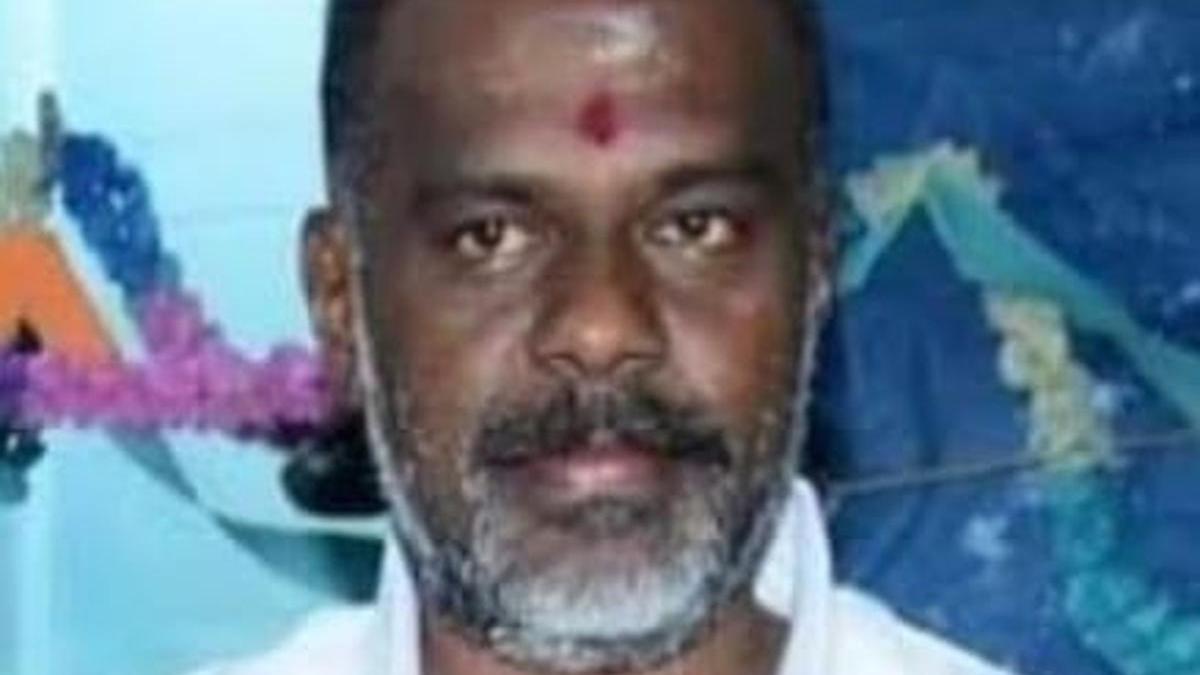
Kolkata’s Dakshindari Youths have portrayed acid attack survivors as their Durga Puja theme for 2025.
| Photo Credit: Debasish Bhaduri
Acid attack survivors have taken centre stage — literally and figuratively — at the Durga Puja by Dakshindari Youths this year in Kolkata. As part of their theme ‘Dahan’ (burning), around five acid attack survivors along with female theatre practitioners are sharing their story with pandal hoppers visiting the puja.

Every day till Dashami, a group of female actors are staging a live theatrical performance in the Puja pandal, intermittently throughout the day, depicting violence against women. Occasionally, the acid attack survivors — four of whom hail from West Bengal — are stepping up to share their lived experience and protest against the crime.
“Durga Puja received the tag of Intangible Cultural Heritage from UNESCO a few years back and has emerged as a cultural phenomenon on the global platform. Lakhs of people are expected to visit our pandal every day. So, we thought of using this reach to raise awareness about the violence against women, especially in the form of acid attacks,” Partha Verma, joint secretary of Dakshindari Youths told The Hindu.

It is worth noting that West Bengal recorded the highest number of acid attacks in the country in 48 cases and 52 victims, according to the 2022 report by the National Crime Records Bureau.
“Acid attack is a horrific crime that is committed even to this day. For our silver jubilee year, we wanted to go beyond just creating an aesthetic Puja pandal. We will consider our efforts this year to be successful if we can evoke empathy and awareness even in a small section of people or bring about a change in mindset in those who are inclined to inflict such violence,” Mr. Verma added.
The artist for this Durga Puja is Anirban Das.
Upon entering the pandal, visitors are immediately met with artistic imagery of citizen protests against acid attacks. The idol of the ten-handed Goddess Durga features a large perforation in the stomach area, representing the hollow remains left behind in the lives of victims of violence. All around the idol, there are artistic renditions of figures from famous paintings like the Mona Lisa, in the context of the pain experienced by women in violence.
During the live performance, actors perform across the pandal and even behind the idol, becoming visible through the large perforation at the centre of the idol
“As one can see, there are several mirrors and dressing tables placed around the idol. The mirrors have all been made opaque. This represents the fact that most acid attack survivors are known to lose their eyesight after the attack and are unable to see themselves in the mirror anymore. There is also a lot of pain when they perceive themselves in the mirror after the attack,” Mr. Verma said.
‘Festive gimmicks’
However, Shaheen Malik, an acid attack survivor and activist who runs the NGO Brave Souls Foundation, said such initiatives are mere gimmicks if the awareness programme is not carried out consistently throughout the year.
“It is tragic that people finally remembered us acid attack survivors for the sake of a festival theme. For the rest of the year, the same people will not care about us or the issue. There is no use of doing this for ten days in a year during the festive season and not doing anything for survivors or for prevention for the rest of the year,” Ms. Malik said.
She highlighted that West Bengal has recently been witnessing a high number of cases of violence against women and has consistently recorded some of the highest number of acid attack cases in the country.
“It is a shame that the same State that worships the Devi also witnesses such violence against women. People treat us like a festive theme and then massage their egos as though they have done something great. Acid attacks as a social issue should be always addressed and treated with utmost importance. We deserve to be valued every day, not just during Durga Puja,” Ms. Malik said.
Published – September 29, 2025 03:10 pm IST

